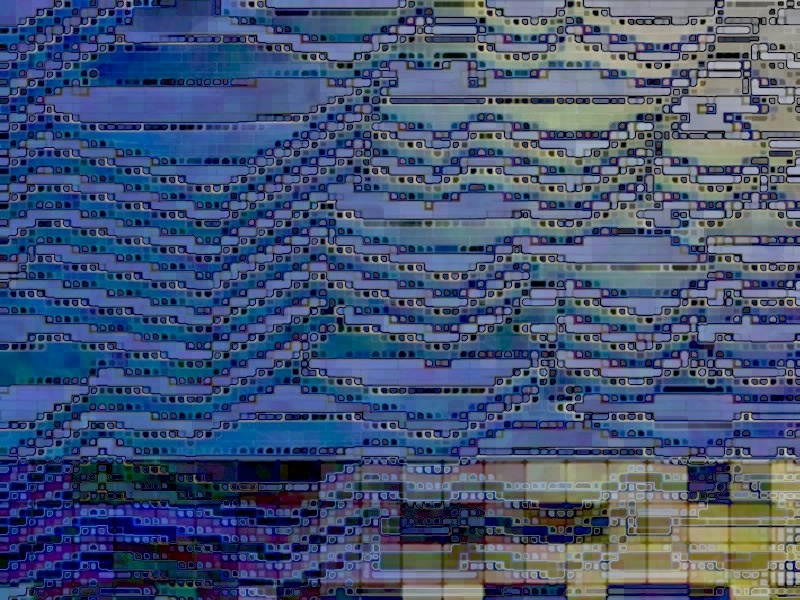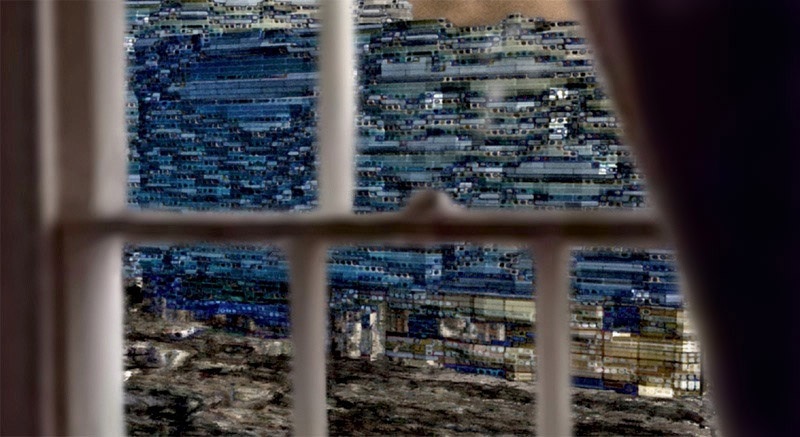This is from May 1999 (ten years gone...)

Yes, I expect you to read each and every one of those little panels!
I made the image in Photoshop by painting on separate layers,
filtering them, trying different opacity settings, then painting some of the details to refine it.
The image above shows how the layers appear when set to 'normal' opacity.
In the file, with the first image on the bottom, the second and third layers are both set to 'difference'.
Next, I made a 3-D model based on the flat image, using a grayscale version of the image as a displacement map (the same way terrain is made - determining the geometric positions of the points by the values of light or dark throughout the map), also using the image as a bump map and the color version as a texture map.
I made a copy of the model and placed it behind and to the left in the scene.
After rendering the models, I added the sky, the dirt road, the window and the curtain.

Making this piece was an attempt to capture a nightmare I had when I lived in New York City
across from a monster apartment building. It turned out pretty accurate.
At the time I made it, my work was featured in a book called Photoshop Collage Techniques.
There was talk of another book on filters but every time I showed examples like this to the author as a possible tutorial feature, he said, "Well, I think that's something only you would want to do."


That's gorgeous, Mike!
ReplyDeletedon't know if I see the final piece as a comic. maybe it's a dark take on Georges Perec's Life: A User's Manual.
ReplyDeletelooks like the setting for a slightly unpleasant science fiction movie.
marvelous, whatever it is. it looks as if people live there.
It's interesting that by making the final piece three-dimensional, it possibly killed the sequentiality in the first version.
ReplyDeleteI tend to think the panel borders and gutters must be relatively flat in order for an image to be read. It might be stretching it a bit to say that the window panes in the final version make panels, although I was conscious of that when I was working on it.
It's definitely one of the common debates that comes along with making abstract comics: comic or not a comic?